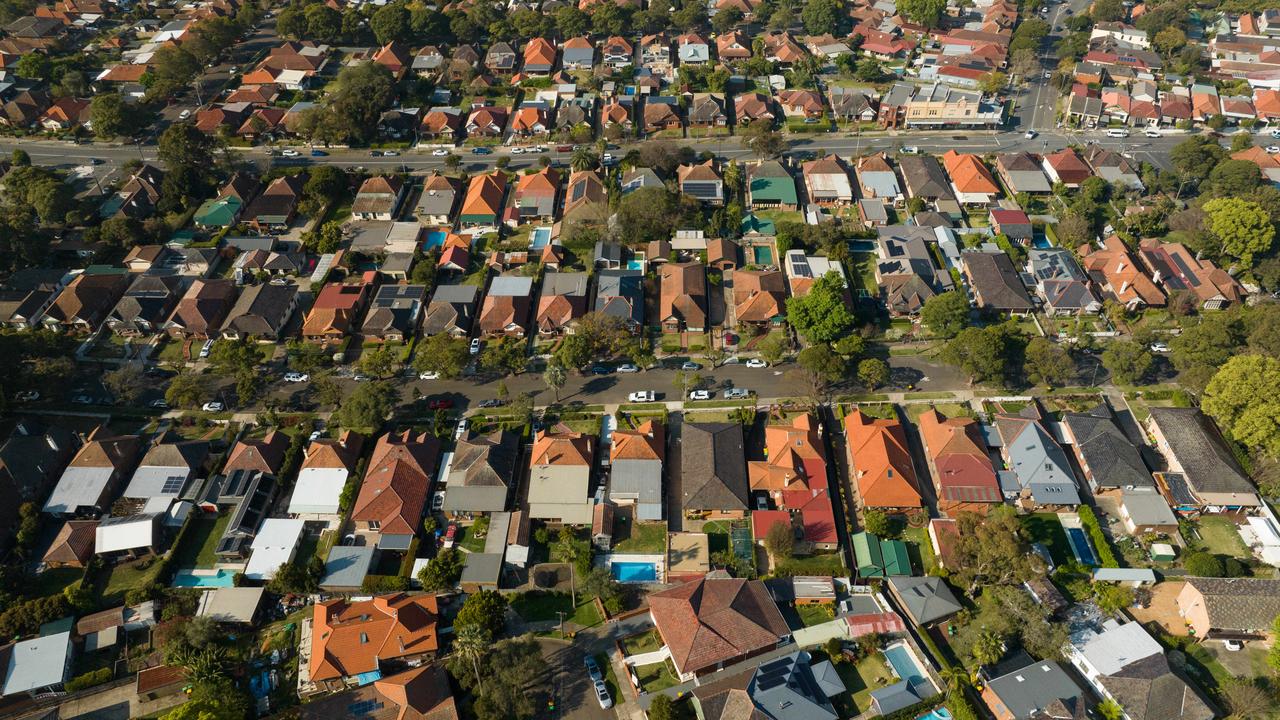‘Major worry’: High house prices culprit for city exit, dragging down productivity
The high cost of housing is seeing more Aussies move to regional areas, decimating a key part of Australia’s economy.

Economy
Don't miss out on the headlines from Economy. Followed categories will be added to My News.
Aussies are financially better off taking a lower paid regional job over living in the city with a higher salary, causing a flow-on effect that could have devastating effects on the economy, a new report has found.
Research by e61 Institute shows Australian workers are increasingly leaving bigger cities as cost of living concerns force workers to move regionally, which is having a negative impact on productivity.
Productivity growth allows an economy to produce and consume more goods and services with the same amount of work, and is closely tied to an increase in living standards.
The report found the outflow of people from the largest capital cities could reflect workers moving away from higher paying, or more productive job opportunities, raising concerns about a less efficient allocation of resources and weaker productivity growth in the future.
Research Director at e61, Gianni La Cava, said when Aussies, particularly in their 30s, are deciding where to live, they are weighing up wages they expect over a lifetime and the cost of housing.
“In many cases, higher wages are not enough to offset the higher housing costs associated with living in the city. Small wonder we are seeing workers in their thirties leaving Sydney and, to a lesser degree, Melbourne,” he said.
“It’s a major worry for national productivity if well-qualified workers are moving away from the highest-paying and most productive job opportunities that in many cases still concentrate in cities.”
Despite affordability constraints, it is unlikely house prices will fall, as a wave of migration puts a floor on property prices and the market struggles to keep up with demand.
According to AMP Capital chief economist Shane Oliver, Australia needed to build around 250,000 new homes to keep up with demand, but has only constructed 176,000.
This was in part due to home builders struggling with rising costs of material and labour, as well as higher mortgage prices pushing down new home sales.

Labour productivity growth has been slowing since the mid-2000s.
According to Treasury reports, the decade to 2020 experienced the slowest productivity growth in 60 years, falling to a yearly average of 1.2 per cent. By comparison, the late 1980s to early 2000s saw a growth rate of around 3 per cent.
According to e61’s research, which is based on 2022 incomes, much of the problem lies in the difference in wages between working in the city and regionally, with wages in the city not matching house price growth.
For knowledge economy workers such as doctors, accountants, and graphic designers, those in the city were only $700 better off than their regional counterparts despite earning $13,730 more.
A decade earlier in 2012, knowledge workers were net $11,150 better off per year living in the city.
For care and service workers, such as paramedics, childcare workers and administrative assistants, living in a major city is even more of a financial net disadvantage. They earn on average $2620 more in a city but are overall $8250 worse off than their regional counterparts who pay less for their housing.
Meanwhile industrial workers, such as truck drivers and labourers, earn about $1000 less on average in the city and are closer to a whopping $10,000 worse off than their regional counterparts, due to the higher house prices in the cities.
This has caused a dramatic decline in city populations, with huge numbers of workers leaving Sydney and Melbourne. Between 2016 and 2021, a net of 130,000 people left Sydney and 25,000 left Melbourne each year for other parts of Australia.
For Sydney, the population would have shrunk without overseas immigration.

While higher house prices are seeing people look regionally, PropTrack data shows the problem is only being exacerbated due to a shortage of supply.
Capital city prices outpaced regional areas in the past year and this trend persisted in October. Prices in regional areas rose 0.20 per cent over the month to be 5.03 per cent above October 2023 levels.
House prices are now 5.62 per cent higher on average across all areas than this time last year.
REA Group senior economist Eleanor Creagh said it was clear housing demand is defying persistent affordability constraints.
July’s tax cuts have boosted borrowing capacities and buyers’ budgets, which has supported growth. The persistent rise in home values has also motivated many to overcome affordability challenges and transact,” she said.
“Though home price growth regained speed in October, elevated interest rates and affordability constraints are weighing. Buyers now have more properties to choose from, and uncertainty around the timing of interest rate cuts remains.”
Originally published as ‘Major worry’: High house prices culprit for city exit, dragging down productivity






